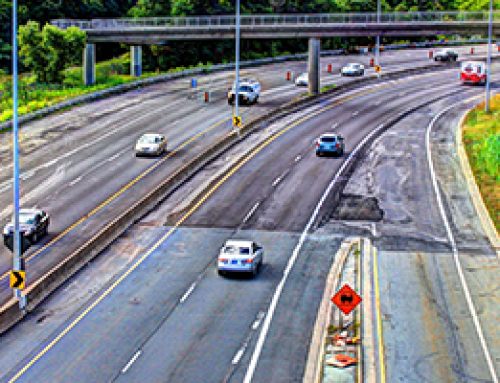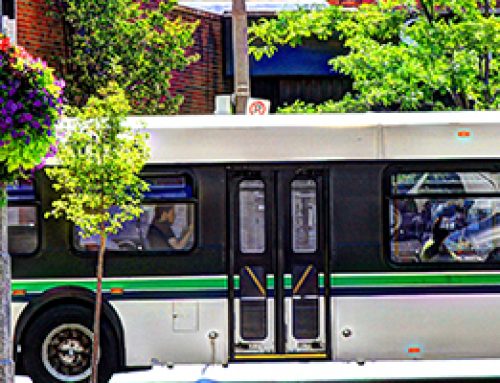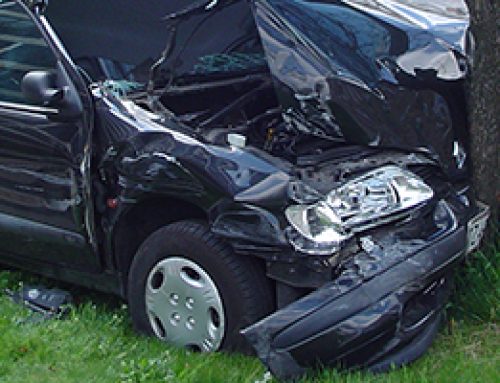Niagara’s unique urban-rural geography and the availability and accessibility of modes of transportation for people to get around have a direct bearing on the health and wellbeing of our people, community and economy. While the automobile is our most-reported mode of transportation, attention is shifting to the socio-economic value for Niagara of building a seamless region-wide transit system linking efficiently to provincial GO transit.
Things We Are Doing Well
- Diverse groups in Niagara are working to inform planning for seamless regional transit, linked to GO train and bus service with capacity to connect Niagara to the GTA and New York State.
- Significant steps were taken in the fall of 2014 to advance toward a seamless, sustained regional transit system supported by regional government, local municipalities, post-secondary students, and poverty reduction and economic development networks in Niagara.
- Awareness is building about the value of planning for Active Transportation by looking through lenses such as economic development, Age-Friendly Community principles, accessibility, health and wellness, recreation, tourism and the environment.
- Niagara’s iconic waterways draw domestic and international traffic, for both recreation and business. A total of 8 marinas on the Great Lakes in Niagara draw significant boat traffic during spring and summer. The Welland Canal portion of the St. Lawrence Seaway allows large lakers and ocean vessels carrying bulk cargo to navigate to and from the heart of North America
Emerging Activities
- Multi-faceted linkages between transit availability and accessibility in Niagara and economic development, poverty reduction, wellness, employment and education are being described and quantified.
- We are gaining increased awareness about students’ and tourists’ role in financially supporting and utilizing public transit in Niagara, along with the economic benefits of making transit available and accessible for them.
- Growth in our cycling infrastructure and Active Transportation (AT) assets are geared toward creating a viable transportation network that keeps people involved in AT and motorists safe. Niagara’s cycling assets are increasingly being promoted to and appreciated by tourists.
- The “Getting There” initiative is exploring centrally-dispatched access to health and human services for Niagara’s most vulnerable people.
- Action to address environmental sustainability and alternative energy through transportation is apparent. Examples include ride and car sharing programs; the existence of 17 Electric Vehicle (EV) charging stations around the region; and promotion of the comparative fuel efficiency and low carbon footprint of marine transportation for shipping bulk cargo.
- Some efforts are underway to reduce border crossing traffic congestion in Niagara by addressing complex issues around completing secure truck pre-inspections at the Peace Bridge crossing, to reduce overall truck and auto congestion, and improve traffic circulation.
Suggested Action Steps
- Increase our understanding of how students, tourists and people going to work utilize transit in Niagara, as important context for transit’s value to the region.
- Advocate for increased prioritization and funding of transit initiatives across the Region by local municipalities in partnership with the Regional Municipality of Niagara, to create a seamless and viable regional transit service. Further encourage the provincial government to continue to increase funding outside the GTA for transit capital and operating enhancements to meet emerging AODA legislation and the needs and expectations of riders across Niagara.
- Continue to focus on the economic and quality of life benefits for Niagara of being a “cyclist/biking friendly” community.
- Apply a healthy community lens in planning to develop walkable, transit supportive and universally accessible communities for all individuals’ enjoyment and participation.
- Support business model research being completed by the ‘Getting There’ working group, to build a practical strategy for centrally-dispatched access to health and human services for Niagara’s most vulnerable people.
Indicators
Accident Rates in Niagara Municipalities
Affordability and Accessibility of Transportation in Niagara
- Cost of Gasoline
- Impact of Regional Transit on Rider Quality of Life
- Student Investment in and Use of Public Transit in Niagara
- Use of Buses and Public Transportation
- Development of a Model for Centrally-Dispatched Access to Health and Human Services for Niagara’s Most Vulnerable People
- Commuting and Distances to Work
- Active Transportation and Cycling in Niagara
- Public Electric Vehicle Charging Stations in Niagara
Transportation Planning in Niagara
- Canada-US Border Crossings
- St. Lawrence Seaway in Niagara: the Welland Canal








